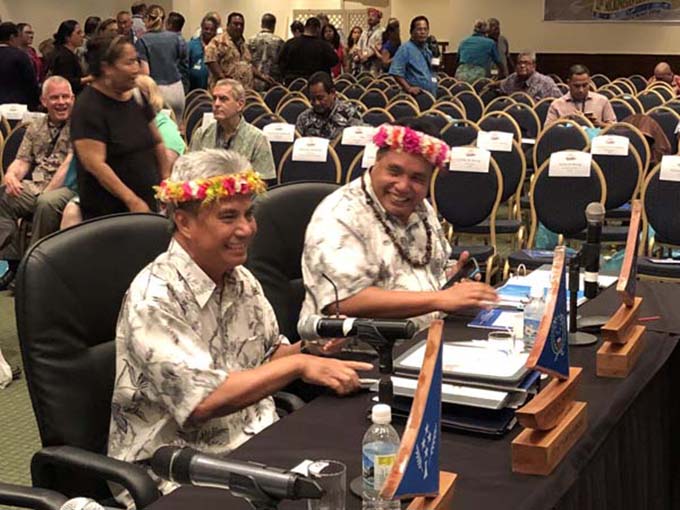
By Erwin Encinares in Saipan
Palau President Tommy Remengesau says Pacific people of Micronesian descent are “dying slowly” because of dietary imbalances on the islands when commenting on a health presentation at the 23rd Micronesia Islands Forum this week.
“Dying a suicidal death that is self-inflicted,” he said.
“It’s sad, but the population around the world are dying because of hunger and poverty – but here in our part of the world we are dying of overeating and bad diet and a lot of this has to do with imported food.”
READ MORE: Micronesian states could work together on labour shortages
Commonwealth Healthcare Corporation chief executive officer Esther Muña identified in a presentation the leading causes of deaths in Micronesia – cancer, diabetes, heart disease, stroke and lung disease.
Remengesau said: “Analysing data, specifically in Palau, unemployed fishermen are in better health than those who are in the government and in the private sector who can afford to buy all these … foods.
“It is certainly a lifestyle.”
Muña called for the forum to pass a resolution that enhanced “telehealth” capabilities in the Pacific.
Telehealth-friendly priority
“Endorse in principle as a matter of regional priority, and to invest jurisdiction resources to enhance and expand telehealth/telemedicine capabilities and capacities appropriate to the needs of each jurisdiction; and support periodic assessments and evaluations of such efforts in terms of cost, sustainable financing, pass policy and legislation which creates a telehealth-friendly environment, and ensure relevant provider/partner coordination,” Muña said in her presentation.
“We are dying slowly.”
The vision and capabilities of enhanced telehealth and telemedicine as an ideal setup for Micronesia was the focus of the second day of the forum.
The forum’s Regional Health Committee touted the benefits of telehealth and telemedicine, citing the concept adopted in some Micronesian islands such as Pohnpei, Kosrae, and Guam.
The committee stressed that an enhanced telehealth and telemedicine capability was ideal for Micronesia, but some governmental policies interfered with telehealth capabilities, limiting its effects in other areas.
Telehealth is the process of using technological advancements in communication to deliver medical services.
Pohnpei Hospital, for example, coordinates with the Hokkaido Cancer Center in Japan for diagnostic information.
Digitised images are sent to the center for diagnosis. Guam Community Health Center, on the other hand, works with the Good Samaritan Hospital in Los Angeles.
Sustainability an issue
However, in an interview after her presentation, Muña said that telehealth issues were concerning.
“It’s not the technology; we already have fiber optic [cables],” she said. “The issue is that we are trying to know that there are layers of policies that are preventing providers from providing those telehealth services.”
According to Muña, sustainability was an issue with telehealth.
According to Muña’s presentation, in the Commonwealth of the Northern Mariana Islands (CNMI) alone, the body-mass index of youths since the year 2000 baseline had gone up in 2017.
Cancer and cardiovascular-related deaths have also risen in the 30-69 age groups, while lung-related deaths have gone down significantly.
Tobacco usage in both forms—chewing and smoking—have also reportedly decreased since the year 2000 baseline. Similar results have been noted for alcohol use among the youth.
Erwin Encinares is a reporter on the Saipan Tribune who has been covering the 23rd Micronesian island Forum.











































